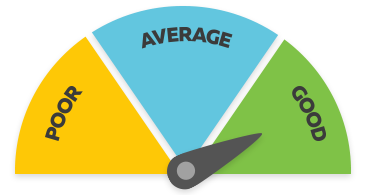User Experience Designer
Kaihoahoa Wheako Whakamahi
Alternative titles for this job
User experience (UX) designers design how products such as websites and apps look and work, based on users' needs.
Pay
User experience designers usually earn
$100K-$175K per year
Source: Absolute IT, 2023
Job opportunities
Pay
Pay for user experience designers varies depending on skills, experience and where they work.
- User experience designers usually earn $100,000 to $175,000 a year.
- Source: Absolute IT, ’IT Job Market and Salary Report 2023.'
- Absolute IT website - IT Job Market and Salary Report 2023 PDF (8.9 MB)
(This information is a guide only. Find out more about the sources of our pay information)
What you will do
User experience designers may do some or all of the following:
- research website and software application (app) design and technology trends
- meet with clients to work out the requirements of their website or app and talk over ideas
- meet users to understand their needs
- work out website or app layouts and how the user will find their way around them
- develop basic designs using wireframes (drawings of layouts) and prototypes (original models used to develop later versions)
- decide on the type, placement and content of graphics and multimedia features
- test designs with users
- liaise with writers, developers and other staff to help create websites or apps.
Skills and knowledge
User experience designers need to have:
- web and app design and graphics skills
- knowledge of user experience methods such as user research and creating wireframes and prototypes
- ability to develop websites and apps
- knowledge of the principles of user-friendly design
- understanding of how people interact with computers and mobile devices
- understanding of common software development and project management practices.
Working conditions
User experience designers:
- usually work regular business hours, but may work longer hours to meet deadlines, especially if they are self-employed
- work from home, in an office, or anywhere a computer can be set up
- often travel locally, nationally and internationally to meet clients, developers, project managers and systems specialists.
What's the job really like?
Web designer (User experience designer)
Kina Desyanandini talks about life as a UX designer – (1.23 mins)
A UX designer at the end of the day tries to make the process of using a
product or service easier. The core part of my job is designing apps and
designing products. If a bank was to come to a user experience designer,
they might say, what's like the outcome that you're seeking from this website?
And the bank might say, well,
we actually want people to be able to apply for a loan really easily.
Based on that, we would create prototypes. So for example,
a landing page design,
and then test that with some customers to see whether that works or not. So I
studied product design,
but at the time my course was actually more closer to industrial design.
So I took a paper in user experience and user interface design.
I chose that path because I really liked how it was low waste.
So it's like all technological, which of course uses power,
but it's still lower waste. And also because it's quite flexible.
You can do a lot with software and you have quite a lot of flexibility with
being able to relocate. Coming from Indonesia,
it gives me a lot more empathy in terms of like bilingual considerations when it
comes to designing an app,
for example. I think my favourite thing about my work is being able to talk to
customers and really seeing the impact that we have on their life.
Entry requirements
There are no specific requirements to become a user experience designer. However, you usually need a certificate, diploma or degree in one of the following:
- web/interaction design
- graphic or media design
- a computer-related area such as computer science.
You also usually need one or both of the following:
- a portfolio of your design work
- examples of projects you have worked on.
Secondary education
A tertiary entrance qualification is required to enter further training. Useful subjects include design and visual communication, and digital technologies.
For Year 11 to 13 students, the Gateway programme is a good way to gain industry experience.
Personal requirements
User experience designers need to be:
- imaginative and creative, with an eye for design
- good at communicating ideas
- able to accept criticism
- able to work well under pressure and unsupervised
- skilled at relationship and project management
- skilled at problem solving.
You have to keep yourself inspired and up to date with new advances. Inspiration might come from looking at the way other websites are designed, or perhaps from architecture, fashion, or graphic design websites.
Jas Hua
User Experience Designer
Useful experience
Useful experience for user experience designers includes:
- previous experience with websites, such as volunteer work in graphic or web design
- software development
- user or market research
- client or project management.
Physical requirements
User experience designers need to know how to use computer equipment properly to avoid occupational overuse syndrome (OOS).
Find out more about training
- Engineering New Zealand
- (04) 473 9444 - hello@engineeringnz.org - www.engineeringnz.org
- IT Professionals
- 0800 252 255 - info@itp.org.nz - www.itp.org.nz
- NZTech
- (09) 475 0204 - info@nztech.org.nz - www.nztech.org.nz
What are the chances of getting a job?
User experience designers in demand
Skilled user experience designers are in demand due to:
- increasing numbers of organisations shifting services and systems online
- growing awareness of the need for user-friendly websites and apps
- existing websites which need redesign so people can easily access them on mobile devices such as phones and tablets.
Shortage of experienced user experience designers
There are not enough experienced user experience designers to meet demand. Nearly two thirds of IT employers report skills shortages, and there aren't enough information technology (IT) trainees.
According to the Census, 1,356 user experience designers worked in New Zealand in 2018.
Types of employers varied
Many user experience designers are employed by:
- firms specialising in websites and apps
- government departments
- large retailers, banks, or service organisations.
Other user experience designers are self-employed.
Sources
- Hays, 'IT Salary Guide and Recruiting Trends', accessed November 2021, (www.hays.net.nz).
- Recruit I.T. 'Technology and Digital Salary Update Auckland', 'Recruit I.T. Technology and Digital Salary Update Wellington', July 2021, (www.recruitit.co.nz).
- Stats NZ, '2018 Census Data', 2019.
(This information is a guide only. Find out more about the sources of our job opportunities information)
Progression and specialisations
User experience designers may progress to set up their own user experience design business, or move into management roles.
Last updated 25 September 2023


